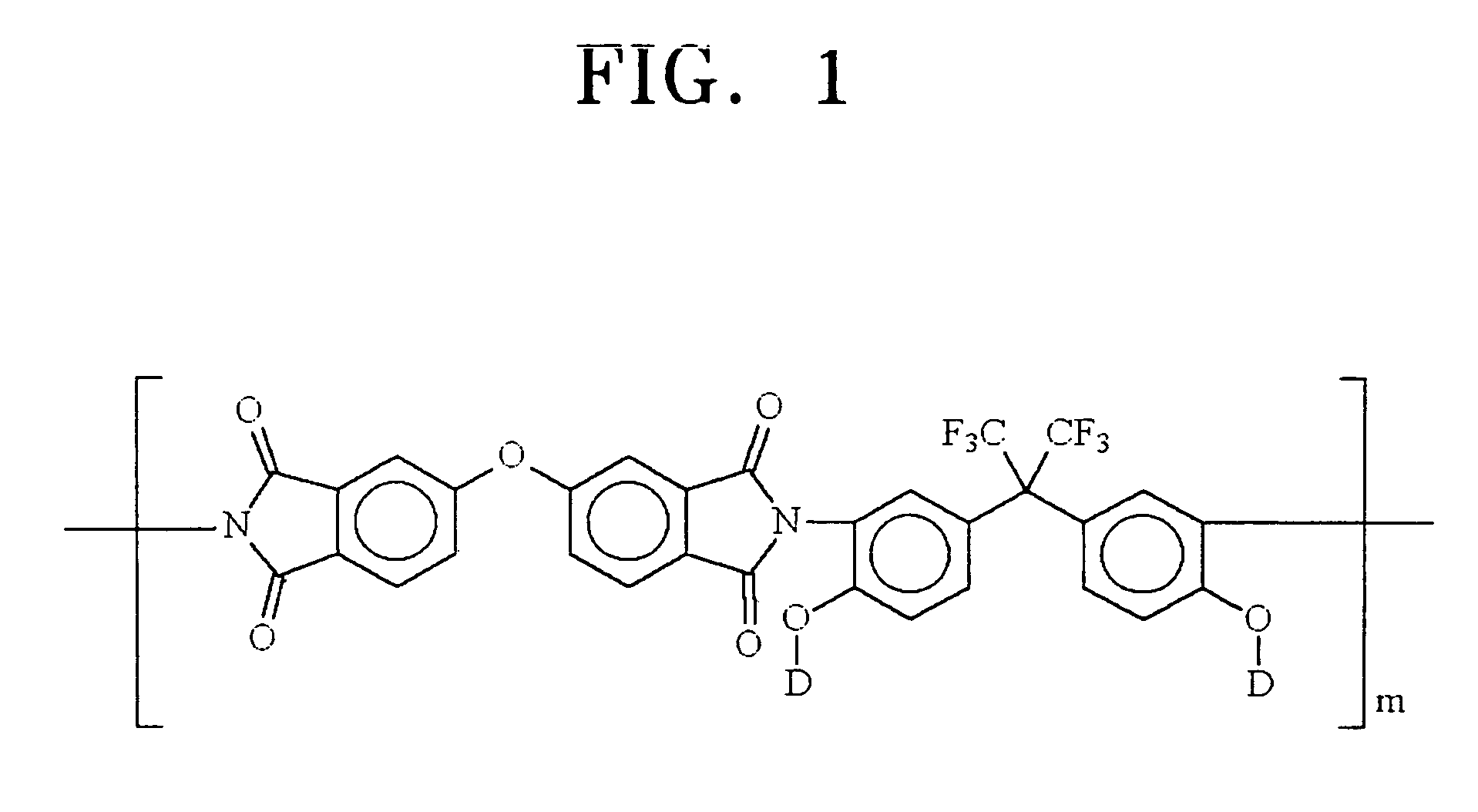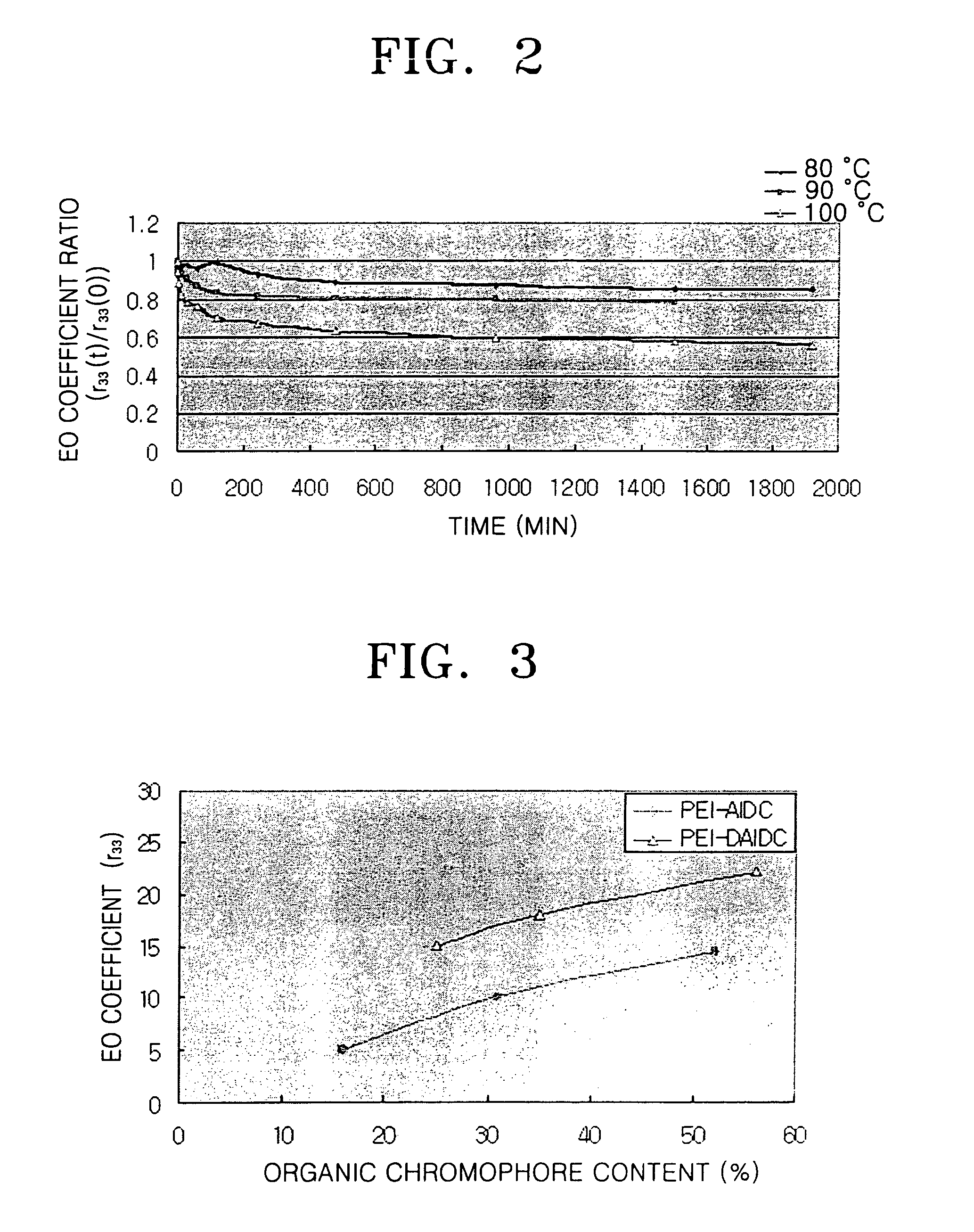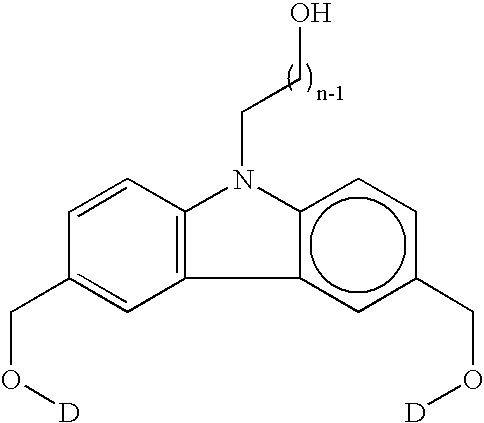Organic dye molecules and nonlinear optical polymeric compounds containing chromophores
a technology of organic dye and polymer compound, which is applied in the field of organic dye molecular materials and nonlinear optical polymer compounds containing chromophores, can solve the problems of limited use of crystalline molecule, difficult to obtain thin film having an appropriate thickness, and limited material use, so as to achieve excellent physical and chemical stability, nonlinear optical effects, and high dye per unit volume of polymer compound
- Summary
- Abstract
- Description
- Claims
- Application Information
AI Technical Summary
Benefits of technology
Problems solved by technology
Method used
Image
Examples
example 1
Synthesis of Compound (I)
[0049]To a 1-L-2-neck flask containing 400 mL of benzene was added 31 g (0.2 mol) of 3,5-dihydroxybenzoic acid, 71 g (0.6 mol) of 1,6-hexane diol, and 1.9 g (10 mmol) toluene sulfonic acid as a catalyst, and the mixture was vigorously stirred. The reactor was equipped with a Dean-Stark apparatus and the benzene was refluxed for about 6 hours while raising the temperature of the reactor using a thermal coil to remove water. After sufficiently removing the benzene, the organic fraction was dissolved with ethylether, neutralized with aqueous sodium hydrogencarbonate, and washed several times with water. The remaining water was removed from the organic fraction using magnesium sulfate, followed by concentration to obtain a white solid compound. The resulting solid compound was recrystallized using benzene to yield 3,5-dihydroxybenzoic acid ester (I) (47 g, 92%).
[0050]1H-NMR (400 MHz; solvent: CDCl3 / acetone-d6; δ ppm): 8.26 (d, 2H, —OH), 6.96 (s, 2H), 6.52 (t, 1H...
example 2
Synthesis of Compound (II)
[0052]The 3,5-dihydroxybezoic acid ester (I) obtained from Example 1 was treated with acetic anhydride and triethylamine to protect all the hydroxyl groups as the acetyl groups, affording Compound (II).
example 3
Synthesis of Compound (III)
[0053]19 g (0.05 mol) of Compound (II) obtained from Example 2 was dissolved in 150 mL methanol. 6.5 g (0.1 mol) of Zn powder activated with 10%-HCl was added to the solution and stirred vigorously for 12 hours at room temperature. The Zn powder was separated by filtration and the solvent was removed. The resulting product mostly included Compound (III) and a small amount of Compound (I) produced as a result of side reaction. The resulting product may be directly subjected to the next reaction if necessary. In the present example, the resulting product was purified by chromatography on silica gel to remove the by-product, resulting in a high-purity Compound (III).
PUM
| Property | Measurement | Unit |
|---|---|---|
| wavelength | aaaaa | aaaaa |
| weight | aaaaa | aaaaa |
| thickness | aaaaa | aaaaa |
Abstract
Description
Claims
Application Information
 Login to View More
Login to View More - R&D
- Intellectual Property
- Life Sciences
- Materials
- Tech Scout
- Unparalleled Data Quality
- Higher Quality Content
- 60% Fewer Hallucinations
Browse by: Latest US Patents, China's latest patents, Technical Efficacy Thesaurus, Application Domain, Technology Topic, Popular Technical Reports.
© 2025 PatSnap. All rights reserved.Legal|Privacy policy|Modern Slavery Act Transparency Statement|Sitemap|About US| Contact US: help@patsnap.com



